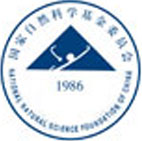 |
PlantRegMap/PlantTFDB v5.0
Plant Transcription
Factor Database
|
| Home TFext BLAST Prediction Download Help About Links PlantRegMap |
Transcription Factor Information
| Basic Information? help Back to Top | |||||||||
|---|---|---|---|---|---|---|---|---|---|
| TF ID | GSMUA_Achr8P00680_001 | ||||||||
| Organism | |||||||||
| Taxonomic ID | |||||||||
| Taxonomic Lineage |
cellular organisms; Eukaryota; Viridiplantae; Streptophyta; Streptophytina; Embryophyta; Tracheophyta; Euphyllophyta; Spermatophyta; Magnoliophyta; Mesangiospermae; Liliopsida; Petrosaviidae; commelinids; Zingiberales; Musaceae; Musa
|
||||||||
| Family | CAMTA | ||||||||
| Protein Properties | Length: 139aa MW: 16604.3 Da PI: 10.8244 | ||||||||
| Description | CAMTA family protein | ||||||||
| Gene Model |
|
||||||||
| Signature Domain? help Back to Top | |||||||
|---|---|---|---|---|---|---|---|
| No. | Domain | Score | E-value | Start | End | HMM Start | HMM End |
| 1 | CG-1 | 150.9 | 3e-47 | 37 | 138 | 3 | 103 |
CG-1 3 ke.kkrwlkneeiaaiLenfekheltlelktrpksgsliLynrkkvryfrkDGyswkkkkdgktvrEdhekLKvggvevlycyYahse 89
+e ++rwlk+ e++ iL+++e++++t++++++p+sgsl+L+nr+++ryfr+DGysw+kkk+gkt rE he+LKvg+ e+++cyYa++e
GSMUA_Achr8P00680_001 37 EEaQSRWLKPVEVLYILQKHESFKITQKPPQKPPSGSLFLFNRRVLRYFRNDGYSWQKKKNGKTAREGHERLKVGNSEAINCYYARGE 124
56699*********************************************************************************** PP
CG-1 90 enptfqrrcywlLe 103
+n+ +qrr+yw+L+
GSMUA_Achr8P00680_001 125 KNSCIQRRSYWMLD 138
*************8 PP
| |||||||
| Protein Features ? help Back to Top | ||||||
|---|---|---|---|---|---|---|
| Database | Entry ID | E-value | Start | End | InterPro ID | Description |
| PROSITE profile | PS51437 | 65.355 | 32 | 139 | IPR005559 | CG-1 DNA-binding domain |
| SMART | SM01076 | 7.5E-48 | 35 | 139 | IPR005559 | CG-1 DNA-binding domain |
| Pfam | PF03859 | 2.3E-42 | 38 | 138 | IPR005559 | CG-1 DNA-binding domain |
| Gene Ontology ? help Back to Top | ||||||
|---|---|---|---|---|---|---|
| GO Term | GO Category | GO Description | ||||
| GO:0005634 | Cellular Component | nucleus | ||||
| GO:0003677 | Molecular Function | DNA binding | ||||
| Sequence ? help Back to Top |
|---|
| Protein Sequence Length: 139 aa Download sequence Send to blast |
MLMRWTVNWG RILRLLKCIT FVFSRVVTGF DINKLSEEAQ SRWLKPVEVL YILQKHESFK 60 ITQKPPQKPP SGSLFLFNRR VLRYFRNDGY SWQKKKNGKT AREGHERLKV GNSEAINCYY 120 ARGEKNSCIQ RRSYWMLDP |
| Functional Description ? help Back to Top | ||||||
|---|---|---|---|---|---|---|
| Source | Description | |||||
| UniProt | Transcription activator that binds to the DNA consensus sequence 5'-[ACG]CGCG[GTC]-3' (By similarity). Regulates transcriptional activity in response to calcium signals (Probable). Binds calmodulin in a calcium-dependent manner (By similarity). Involved together with CAMTA2 and CAMTA3 in the positive regulation of a general stress response (PubMed:25039701). {ECO:0000250|UniProtKB:Q8GSA7, ECO:0000269|PubMed:25039701, ECO:0000305|PubMed:11925432}. | |||||
| Regulation -- Description ? help Back to Top | ||||||
|---|---|---|---|---|---|---|
| Source | Description | |||||
| UniProt | INDUCTION: By heat shock, UVB, salt, wounding, ethylene, methyl jasmonate, abscisic acid, H(2)O(2) and salicylic acid (PubMed:12218065). Induced by cold stress (PubMed:28351986). {ECO:0000269|PubMed:12218065, ECO:0000269|PubMed:28351986}. | |||||
| Regulation -- PlantRegMap ? help Back to Top | ||||||
|---|---|---|---|---|---|---|
| Source | Upstream Regulator | Target Gene | ||||
| PlantRegMap | Retrieve | - | ||||
| Annotation -- Protein ? help Back to Top | |||||||
|---|---|---|---|---|---|---|---|
| Source | Hit ID | E-value | Description | ||||
| Refseq | XP_009412759.1 | 7e-73 | PREDICTED: calmodulin-binding transcription activator 4 isoform X2 | ||||
| Refseq | XP_009412760.1 | 4e-73 | PREDICTED: calmodulin-binding transcription activator 4 isoform X3 | ||||
| Refseq | XP_009412761.1 | 4e-73 | PREDICTED: calmodulin-binding transcription activator 4 isoform X4 | ||||
| Swissprot | Q9FYG2 | 2e-43 | CMTA4_ARATH; Calmodulin-binding transcription activator 4 | ||||
| TrEMBL | M0TLH0 | 2e-99 | M0TLH0_MUSAM; Uncharacterized protein | ||||
| STRING | GSMUA_Achr8P00680_001 | 1e-100 | (Musa acuminata) | ||||
| Orthologous Group ? help Back to Top | |||
|---|---|---|---|
| Lineage | Orthologous Group ID | Taxa Number | Gene Number |
| Monocots | OGMP15485 | 8 | 17 |
| Best hit in Arabidopsis thaliana ? help Back to Top | ||||||
|---|---|---|---|---|---|---|
| Hit ID | E-value | Description | ||||
| AT1G67310.1 | 8e-46 | Calmodulin-binding transcription activator protein with CG-1 and Ankyrin domains | ||||
| Publications ? help Back to Top | |||
|---|---|---|---|
|
|||



